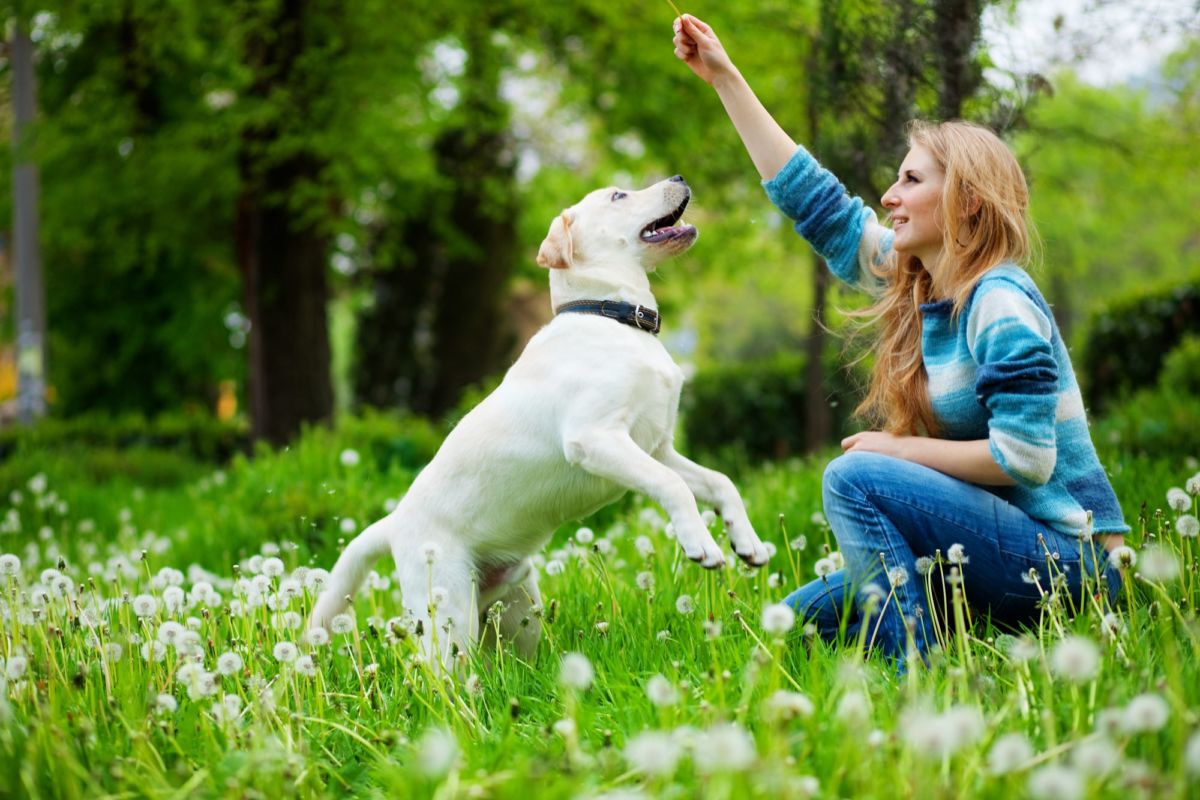The dog park can be a wonderful space for your pet to play, make new friends and run off some energy. However, not obeying basic dog park etiquette rules can make your trip to the dog park a stressful event for everyone. In some situations, it can even turn into a disaster. Thankfully, obeying the seven dog park etiquette rules below can help make sure it’s a pleasant experience for you, your dog and the dog parks as well.

1. Don’t Take Young Dogs
You shouldn’t take young puppies or dogs to dog parks for several reasons. First and foremost, it’s easy for them to get hurt when playing with other dogs. But also, very young pets haven’t likely learned the proper commands to be safe at a dog park.
2. Never Bring Sick Dogs
If you wouldn’t go in public with something contagious, it makes sense you wouldn’t bring a sick dog to a dog park. Even if you think it’s just allergies (which happen to some animals), it’s best to play it safe. Otherwise, you risk getting other dogs sick. Additionally, an ill animal at the dog park is more likely to be aggressive with other dogs because it doesn’t feel good. Aggressive behaviors can lead to dog fights and the injury (or even death) of one or more dogs.
3. Keep Your Dog’s Leash on (With Exceptions)
When you see a dog park that’s fenced in, your first instinct may be to allow your dog to run free off its leash. However, this isn’t a good idea, with a few exceptions. A dog off its leash is harder to control, and you never know how your pup may react to other dogs. You also don’t know how other dogs will respond to yours.
Of course, most dog parks do have off-leash areas that are separate from the rest of the park. If you meet all the following conditions, you can let your dog off its leash:
- You’re in a designated off-leash area.
- Your dog has been trained to listen to certain commands, even when not leashed.
- You’ve scoped the other dogs in the off-leash area and none show signs of aggression.
- Your dog seems relaxed and not too hyper.
Even in designated areas, you should keep a close eye on your dog and remain nearby just in case. While socializing with other pet parents is part of the draw of your local dog park, paying attention to your dog is more important.
4. Ensure Your Dog Has Been Properly Socialized
Pet parents want only the best for their furry friends, and everyone knows socializing is crucial for a dog’s emotional well-being. However, dog parks should never be the first round of socializing because they contain many unfamiliar dogs. This can turn even the happiest dog into a very uncomfortable dog, leading to unwanted (or even dangerous) behaviors.
Before planning a trip to a dog-friendly park, socialize your dog in less intimidating scenarios. For example, make one-on-one playdates with other dog owners. Most dogs are significantly more comfortable in a one-on-one situation compared to a group setting. You may also want to enroll your puppy in a puppy daycare program when it’s young or visit obedience training classes.
Regardless of how you socialize your dog before going to the park, you must begin very young. Many dogs do better when they’ve grown up around other dogs, different types of animals, children and adults.

5. Teach Your Dog These Crucial Commands Before Its First Visit
As a pet parent, you should ensure your dog understands a few basic but crucial commands before its first on-leash visit to a dog park. The most important commands are sit, stay and heel.
Sit teaches your dog to stop what it’s doing and sit. You can use this command to keep a dog at your side, help it calm down when overexcited or remain somewhere so you can come to get it.
Stay is another command that can keep your dog by your side or have it remain somewhere. Practice this command at home by walking away with your back turned to ensure your pup listens even when it’s not being watched.
Heel is an excellent command for on or off the leash. It tells your dog to remain by your side when walking or standing still. Heel is a great command to use if your dog becomes afraid of big dogs, gets too excited over new dogs or other similar situations.
6. Pay Attention to Your Dog’s Body Language
Dog owners should learn their dog’s body language intimately before taking them to a dog park. Dog body language can help you know if your dog feels threatened or uncomfortable or is likely to become aggressive with strange dogs. Not all dogs get along well with their own species, and it’s up to you to understand your pet.
7. Know the Rules of the Dog Park
Every dog park has its own set of rules both you and your dog will need to follow. However, some of the most common rules generally include:
- Always clean up your dog’s poop.
- Ensure shots are up-to-date.
- Ask before allowing your dog to play with other canines.
- Never bring small children to a dog park.
- Keep smaller dogs in the small dog area.
- Avoid bringing your dog’s favorite toy with you.
- Don’t feed other animals.
Read up on the park’s rules before heading there in person. You may also find it helpful to have your visit during off-peak hours to give your dog a chance to acclimate itself to a new environment.
Get Help With Dog Park Etiquette Training Today
If you’re still feeling uncertain about the dog park etiquette rules we shared, check out our informative blog for more information. If you’d like help with professional training before taking your canine to the dog park, you can learn more about our comprehensive training program online.
